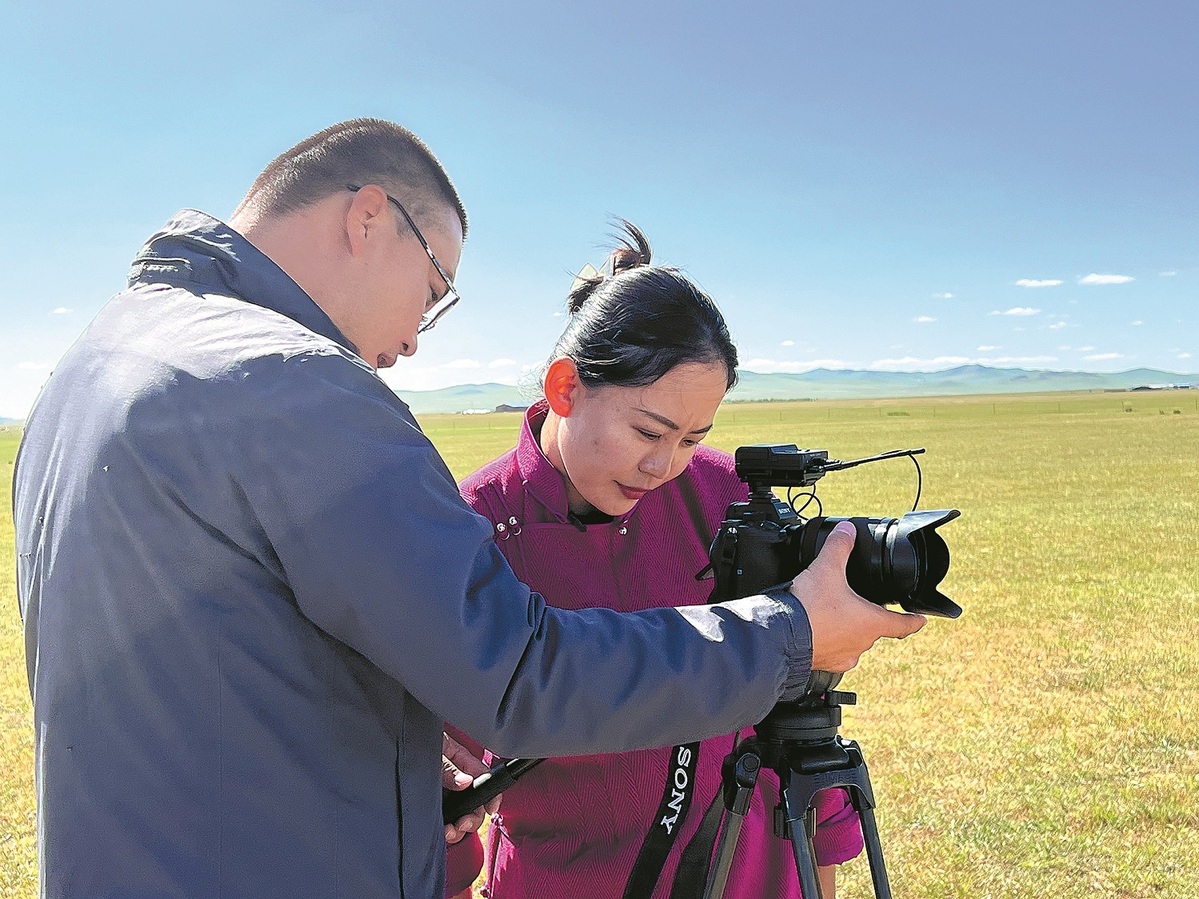Ethnic vloggers popularize highs and lows of rural life
Videos about herdsmen, nomads attract growing number of city followers


Nomadic lifestyle
Many people heard about Xi Ujimchin Banner for the first time because of Uyinga's videos. And many of her followers have come to visit the banner, which is famous for breeding white horses.
"A longtime follower of mine from Guangzhou city (Guangdong province) said everything seemed so familiar when she arrived in the banner because she has seen it all before in my videos," Uyinga said, adding her videos have boosted understanding among people from different places and ethnic groups.
In the future, she plans to include more content about the cultural heritage of the Mongolian ethnic group in her videos as well as local people's stories, she said.
Unlike Uyinga who has already mastered making and posting short videos, Gausar Kinnes from the Kazak ethnic group is a novice when it comes to using social media platforms to let more people know about the lifestyle of Kazak herdsmen in Xinjiang.
Earlier this year, the popular TV series To the Wonder, based on the novel My Altay by author Li Juan, turned the spotlight on the nomadic life of the Kazaks in Altay prefecture in Xinjiang.
Some of the scenes in the TV series were shot in Naren summer pasture where Gausar was raised.
Since May, the young university graduate has been recording her family's routines on the pastures and sharing them on social media, after many people showed great interest in the life of Kazak herdsmen.
"I've been moving with my parents and the livestock to different pastures as the seasons change since I could walk. But I still see myself as a trainee herder," Gausar said. Kazak herders move between the winter pastures, spring-autumn pastures and summer pastures throughout the year, she said.
Gausar said she decided to leave the city and return to the grassland because she wanted to be with her family.
"Also, I want people to know that we have still kept our nomadic life by sharing our life on social media," she said.
Besides sharing how her family grazes sheep and cattle as well as the tough trips moving livestock to different pastures, in her videos she also teaches people how to make traditional Kazak food and drink, such as milk tea. What's more, she also often teaches people how to speak basic Kazak phrases.
"Many people comment that they envy that we can live in such beautiful places. In fact, as herdsmen, we have a lot of work to do and go through many hardships. There is no easy life," Gausar said.


















